Courage, Compassion, and Connection: The Gifts of Imperfection
I define connection as the energy that exists between people when they feel seen, heard, and valued; when they can give and receive without judgment; and when they derive sustenance and strength from the relationship.
Ashley and I felt deeply connected after our experience. I know I was seen, heard, and valued. Even though it was scary, I was able to reach out for support and help. And we both felt strengthened and fulfilled. In fact, a couple of weeks later, Ashley said, “I can’t tell you how glad I am that you called me that day. It helped me so much to know that I’m not the only one who does stuff like that. I also love knowing that I can help you and that you trust me.” Connection begets connection.
As a matter of fact, we are wired for connection. It’s in our biology. From the time we are born, we need connection to thrive emotionally, physically, spiritually, and intellectually. A decade ago, the idea that we’re “wired for connection” might have been perceived as touchy-feely or New Age. Today, we know that the need for connection is more than a feeling or a hunch. It’s hard science. Neuroscience, to be exact.
In his book Social Intelligence: The New Science of Human Relationships, Daniel Goleman explores how the latest findings in biology and neuroscience confirm that we are hardwired for connection and that our relationships shape our biology as well as our experiences. Goleman writes, “Even our most routine encounters act as regulators in the brain, priming our emotions, some desirable, others not. The more strongly connected we are with someone emotionally, the greater the mutual force.” It’s amazing—yet perhaps not surprising—that the connectedness we experience in our relationships impacts the way our brain develops and performs.
Our innate need for connection makes the consequences of disconnection that much more real and dangerous. Sometimes we only think we’re connected. Technology, for instance, has become a kind of imposter for connection, making us believe we’re connected when we’re really not—at least not in the ways we need to be. In our technology-crazed world, we’ve confused being communicative with feeling connected. Just because we’re plugged in, doesn’t mean we feel seen and heard. In fact, hyper-communication can mean we spend more time on Facebook than we do face-to-face with the people we care about. I can’t tell you how many times I’ve walked into a restaurant and seen two parents on their cell phones while their kids are busy texting or playing video games. What’s the point of even sitting together?
As we think about the definition of connection and how easy it is to mistake technology for connecting, we also need to consider letting go of the myth of self-sufficiency. One of the greatest barriers to connection is the cultural importance we place on “going it alone.” Somehow we’ve come to equate success with not needing anyone. Many of us are willing to extend a helping hand, but we’re very reluctant to reach out for help when we need it ourselves. It’s as if we’ve divided the world into “those who offer help” and “those who need help.” The truth is that we are both.
I’ve learned so much about giving and receiving from the men and women who are engaged in Wholehearted living but nothing more important than this:
Until we can receive with an open heart, we are never really giving with an open heart. When we attach judgment to receiving help, we knowingly or unknowingly attach judgment to giving help.
For years, I placed value on being the helper in my family. I could help with a crisis or lend money or dispense advice. I was always happy to help others, but I would have never called my siblings to ask them for help, especially for support during a shame storm. At the time, I would have vehemently denied attaching judgment to my generous giving. But now, I understand how I derived self-worth from never needing help and always offering it.
During the breakdown, I needed help. I needed support and hand-holding and advice. Thank God! Turning to my younger brother and sisters completely shifted our family dynamics. I gained permission to fall apart and be imperfect, and they could share their strength and incredible wisdom with me. If connection is the energy that surges between people, we have to remember that those surges must travel in both directions.
The Wholehearted journey is not the path of least resistance. It’s a path of consciousness and choice. And, to be honest, it’s a little counterculture. The willingness to tell our stories, feel the pain of others, and stay genuinely connected in this disconnected world is not something we can do halfheartedly.
To practice courage, compassion, and connection is to look at life and the people around us, and say, “I’m all in.”
From The Gifts of Imperfection: Let Go of Who You Think You’re Supposed to Be and Embrace Who You Are by Brené Brown, Ph.D., L.M.S.W.. Copyright 2010 by Hazelden Foundation.











